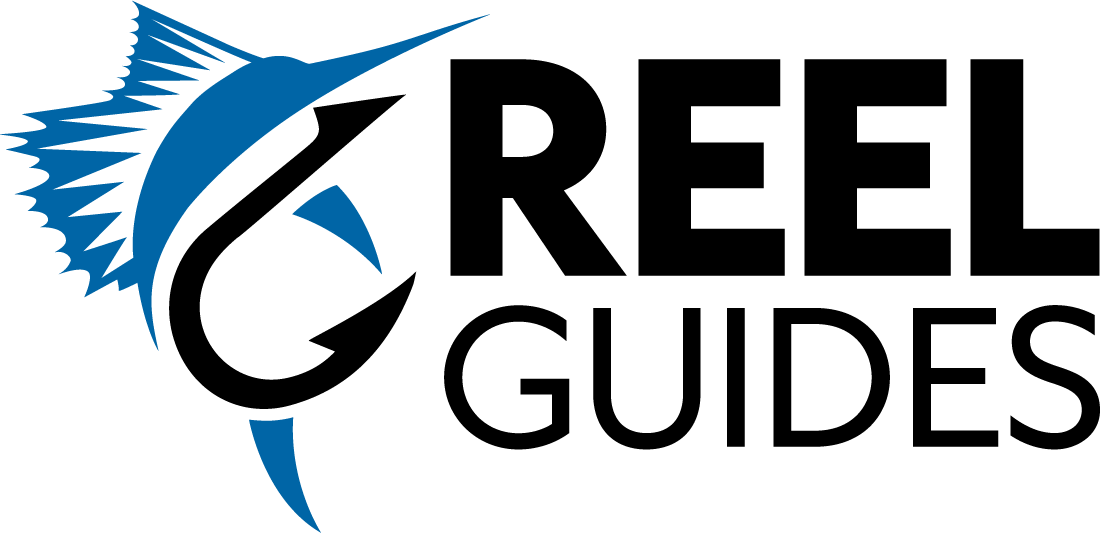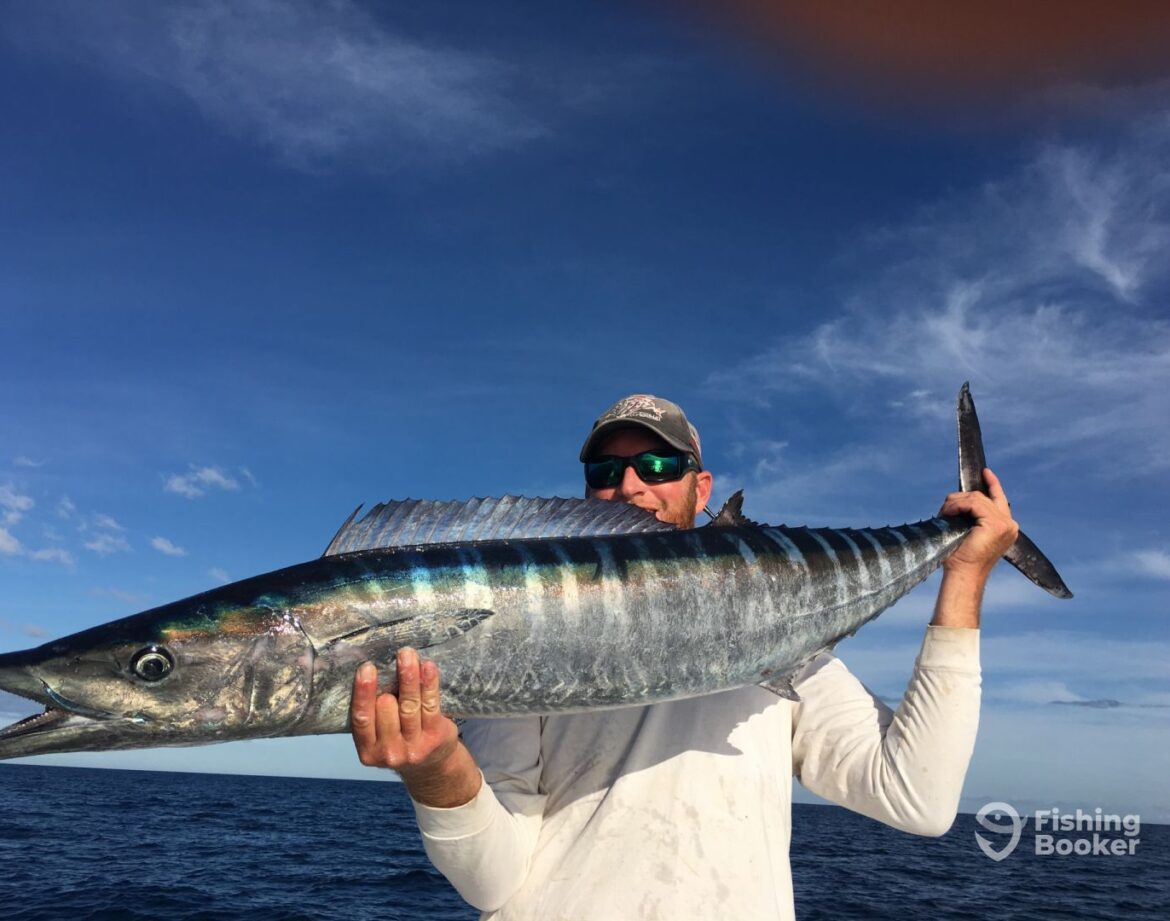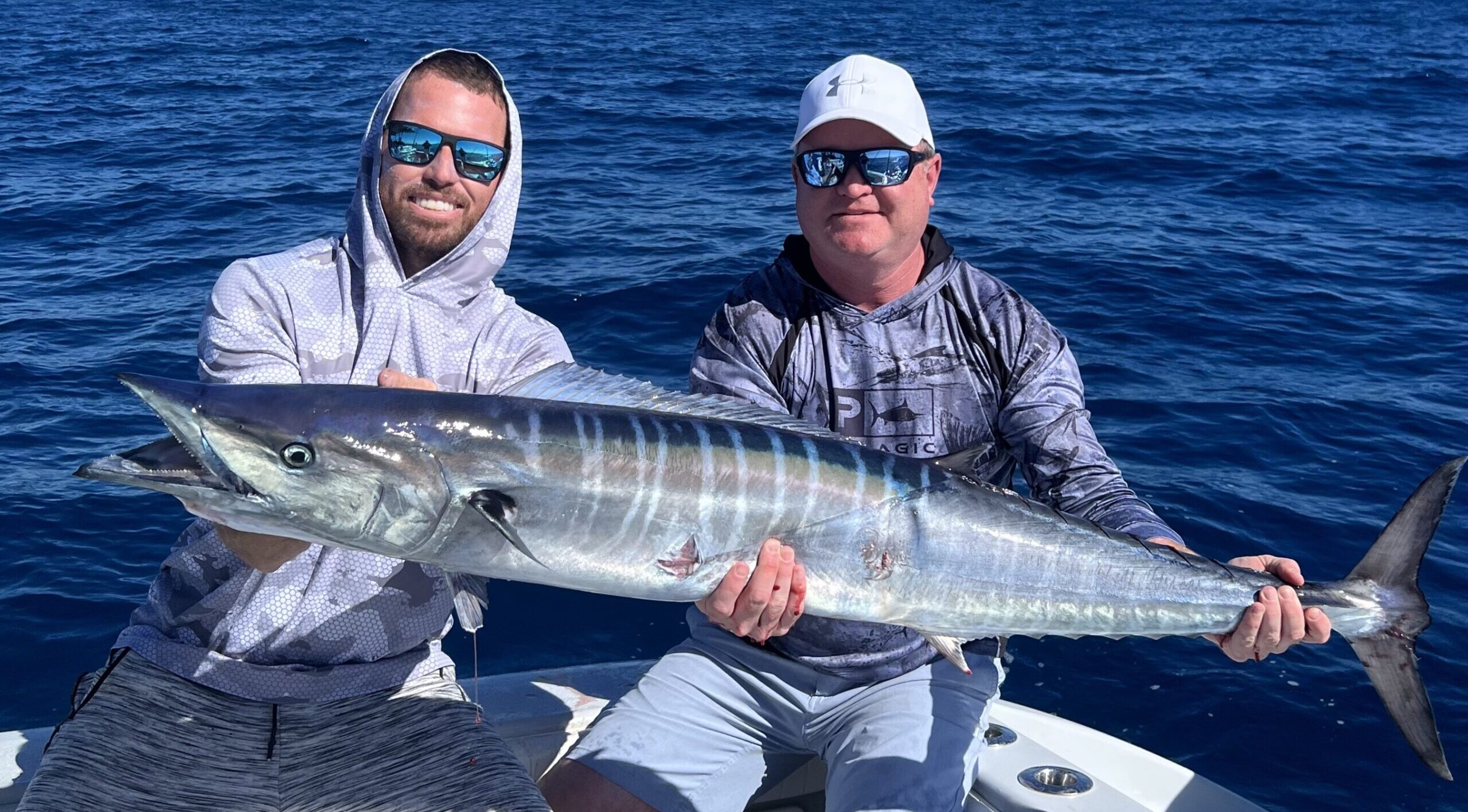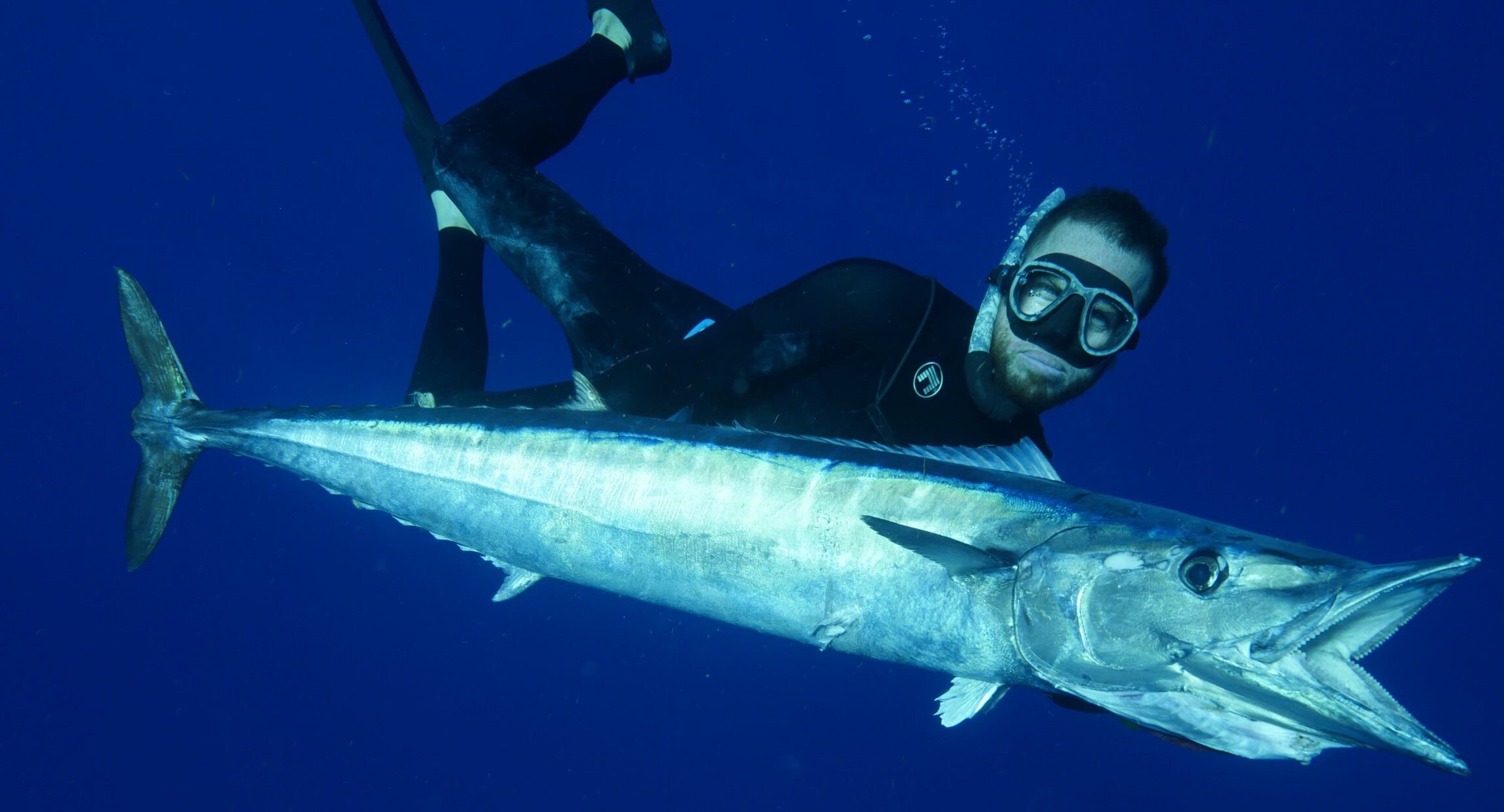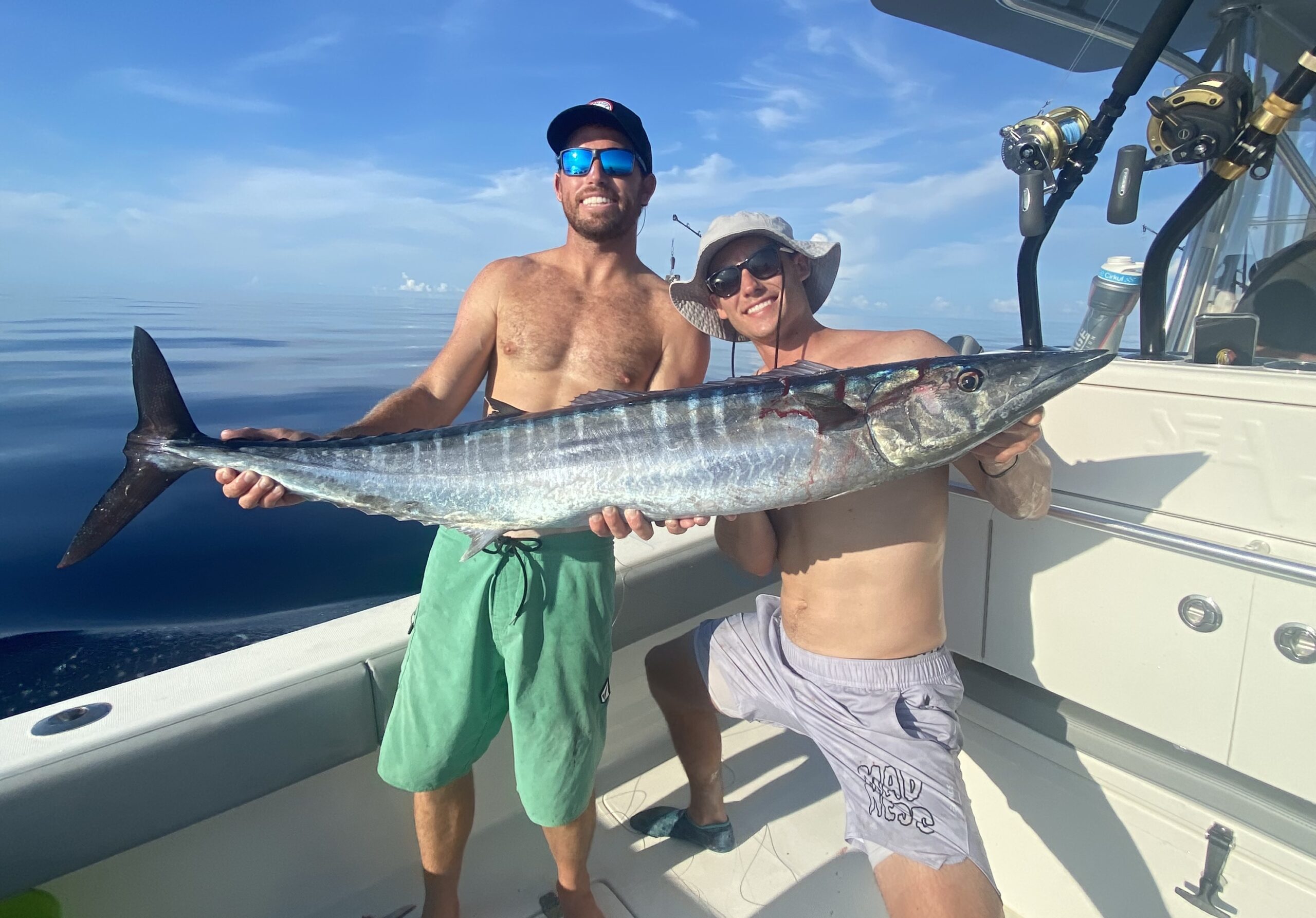Mastering Wahoo Fishing in 6 Simple Steps
Written By: Captain Kody Michael
Wahoo fishing is one of the most sought-after pursuits for anglers around the world. As a charter captain in Key West, I’ll provide insights into the most effective techniques and strategies while targeting the elusive wahoo fish.
But before I do, here’s a YouTube video of an exceptional day my friends and I live-baiting for Wahoo!
Mastering Wahoo Fishing in 6 Simple Steps
1. Understanding Wahoo Fish Habits
Wahoo can be found in various locations along every coast in the United States. Their preferred habitats include coral reefs, steep drop-offs, and numerous wrecks ranging from 100 to 400 feet deep. Additionally, these migratory pelagic fish are often encountered in the Bluewater as they roam the ocean.
Known for their intelligence and adaptability, Wahoo fish are known to be a challenging yet rewarding targeted species for anglers. Understanding their habits is the first step to mastering the art of wahoo fishing.
2. Targeting Wahoo: Tactics and Techniques
Wahoo Fishing: High-Speed Trolling
One of the most popular methods while Wahoo fishing is high-speed trolling. This involves pulling large lures on cable lines at speeds ranging from 12 to 20 mph. These lures are rigged on 400 pound cable, which is then connected to a 20-30 foot shock leader made up of 300 pound mono.
The last step requires you to connect the main line to the cigar led, ranging from 16-80 ounces. These Wahoo lures, with in-line cigar-shaped leads, imitate a school of baitfish, zigzagging up and down the reef. Optimal depths for high-speed trolling range between 100 and 600 feet.
High-speed trolling is not only an effective strategy but also an adrenaline-pumping experience for anglers. The anticipation of a wahoo strike at these high speeds adds an extra layer of excitement to the fishing adventure.
My go to Wahoo lures are found on Seaworx Fishing. They have put together a high-speed trolling set that will outfit you with a variety of effective wahoo lures. You can find this package here. I also get majority of my hooks, leter, and line at Mustad Fishing. (Scroll to the bottom of this article for a special discount with Mustad).
Wahoo Fishing: Medium Speed Trolling
Utilizing planers and rigged ballyhoo is another tactical method while Wahoo fishing. This typically involves trolling at speeds between eight and 12 mph. Planers enable the bait to reach deeper depths where wahoo often hunt for small fish and schools of bait. Diving plugs, marauders, and lures with enticing swimming actions are commonly used in medium-speed trolling.
Medium-speed trolling offers a more versatile approach, allowing anglers to cover a broader range of depths and conditions. This flexibility increases the chances of a successful wahoo catch across various scenarios.
Wahoo Fishing: Slow Trolling Live Bait
For the most exciting experience, slow trolling live bait on light tackle rods is a top choice. Live blue runners, speedo, goggleyes, or small live bonitas are irresistible to large wahoo. Rigging these baits on wire rigs with J hooks and treble hooks, and trolling at depths of 100 to 200 feet, can yield remarkable results.
The optimal wahoo rig for slow trolling live bait is a stinger rig. This setup involves using a 10-ft section of 50lb fluorocarbon leader, connected by a compact 150lb swivel.
From the swivel, extend 4ft of number #6 AFW wire, leading to a 5/0 Mustad Ultra Point J hook. About 6 inches of number #7 wire, tailored to the size of the baitfish, runs from the J hook to a size 2-3/0 Mustad treble hook securely placed in the tail of the baitfish.
Given that wahoo frequently attack the midsection or tail of the baitfish, often severing it in half before returning to consume the remainder, the positioning of the treble hook is crucial. Ensuring that the treble hook is anchored near the tail of the baitfish is essential. In the majority of cases, around 9 out of 10 times, the wahoo will be hooked on the rear treble hook, reflecting the typical nature of their aggressive attacks. In this YouTube video, you can see at 3:09 how to hook the Wahoo bait properly.
Slow trolling live bait requires patience and precision. It’s a method that demands a deep understanding of wahoo behavior and the ability to adapt to changing conditions on the water.
Thankfully I’ve partnered with Mustad, a top fishing brand in the USA. Mustad has given all of our readers a 20% sitewide discount code (REELGUIDES) to buy any fishing hooks you may need.
3. Choosing the Right Conditions
Success in slow trolling for wahoo depends on finding clean blue water with calm conditions and current running parallel to the coast. Light winds and a steady barometer are also a big factor when locating these fish. Look for lively coral reefs or large shipwrecks known to attract wahoo. Trolling with the current is crucial, as wahoo fish feed with their noses into the current, anticipating passing baitfish.
Understanding the environmental factors that influence wahoo behavior is key to consistently finding and catching these elusive predators. Factors such as water temperature, currents, and the presence of baitfish play a crucial role in determining the success of your wahoo fishing expedition.
4. Timing is Everything
The prime time for wahoo fishing is 3 to 5 days prior to the full moon or during a new moon. The peak season typically spans from November through late March, presenting optimal conditions for a successful wahoo expedition.
Timing your fishing trips based on lunar phases and seasonal patterns is a strategic move that increases your chances of encountering active wahoo. Understanding the factors that influence their behavior during different times of the year allows you to plan your trips effectively.
5. Gear and Equipment Essentials While Wahoo Fishing
Mastering wahoo fishing requires not only skill and knowledge but also the right gear and equipment. Investing in high-quality rods, reels, lines, and lures is crucial for a successful wahoo fishing expedition. Consider the following gear essentials:
Rods and Reels
Choose heavy-duty trolling rods and reels with a high line capacity. Wahoo fish are known for their speed and strength, so having sturdy equipment is essential to handle their powerful runs.
Lines and Leaders
Opt for durable braided lines with a high pound test to withstand the force of a wahoo strike. Additionally, use strong leaders, preferably made of wire, to prevent the sharp teeth of wahoo from cutting through the line.
Lures and Baits
Selecting the right lures is crucial for enticing wahoo. High-speed trolling often involves using large lures with in-line cigar-shaped leads. For medium-speed trolling, diving plugs and lures with attractive swimming actions are effective. When slow trolling live bait, ensure it’s lively and rigged with sturdy wire leaders.
6. Safety Precautions and Conservation Practices
As responsible anglers, it’s crucial to prioritize safety on the water and contribute to the conservation of wahoo populations. Follow these safety precautions and conservation practices:
Safety Precautions
- Always have enough life jackets while on the boat.
- Check weather conditions before heading out, and be prepared for any changes.
- Inform someone on land about your fishing plans, including your expected return time.
Conservation Practices
- Practice catch and release for undersized or non-target species.
- Follow local regulations and size limits to ensure sustainable fishing practice.
Conclusion
As a captain who has become well acquainted with this species, mastering the art of wahoo fishing requires a combination of understanding their habits, employing effective tactics, choosing the right conditions, timing your expeditions correctly, and having the right gear. With time and practice, I believe that these insights will equip you to master the art of Wahoo fishing!
Drop a Comment!
We’d love to hear from you! If you have any tips or experiences to share, feel free to drop a comment below. Have any questions about what you read or about fishing in general? Don’t hesitate to ask!
For more tips and techniques on fishing, don’t forget to subscribe to our blog and follow along on our fishing adventures on our channel Reel Guides TV on YouTube.
Looking to book a wahoo fishing charter in Florida?
We started Reel Guides to make it easy to book fishing trips at your preferred destination!
If you are interested in booking a Wahoo charter in Florida, click here to check out our list of top-rated guides and the various fishing trips they offer.
Use promo code REELGUIDES for an additional 20% off your next order at www.mustad-fishing.com.
